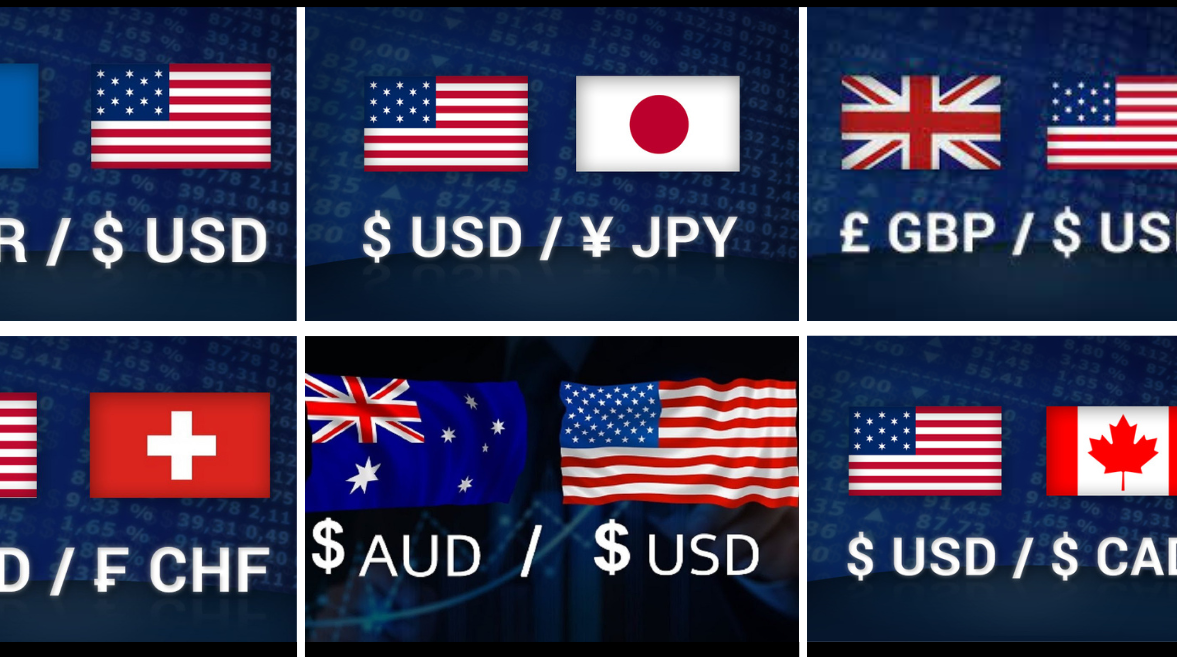Major currency pairs are the backbone of the foreign exchange (Forex) market. These pairs consist of the most traded currencies globally, which makes them highly liquid and less volatile compared to minor or exotic pairs. Understanding how to trade these pairs can be crucial for both novice and experienced traders. In this article, we will delve into what major currency pairs are, how they are traded, and strategies to maximize your trading success.
Table of Contents
ToggleWhat Are Major Currency Pairs?
Major currency pairs consist of currencies that are paired with the U.S. dollar (USD). The most commonly traded major pairs include:
- EUR/USD (Euro/US Dollar)
- USD/JPY (US Dollar/Japanese Yen)
- GBP/USD (British Pound/US Dollar)
- USD/CHF (US Dollar/Swiss Franc)
- AUD/USD (Australian Dollar/US Dollar)
- USD/CAD (US Dollar/Canadian Dollar)
- NZD/USD (New Zealand Dollar/US Dollar)
These pairs account for the vast majority of trading volume in the Forex market, making them an essential focus for traders.
Characteristics of Major Currency Pairs
Liquidity
One of the primary reasons traders favor major currency pairs is their liquidity. High liquidity means that you can buy or sell these currencies quickly without causing significant price changes. This is crucial for day traders who need to execute trades efficiently.
Volatility
While major currency pairs are generally less volatile than minor or exotic pairs, they still experience fluctuations influenced by economic news, geopolitical events, and market sentiment. Understanding these factors can help traders manage their risk better.
Spread
The spread is the difference between the buying (ask) price and selling (bid) price. Major pairs typically have tighter spreads compared to minor and exotic pairs, making them more cost-effective for traders. For example, the EUR/USD might have a spread of just a few pips, whereas an exotic pair could have a spread of several dozen pips.
How to Trade Major Currency Pairs
Fundamental Analysis
Understanding the economic indicators that affect currency values is essential for trading major pairs. Some key indicators to consider include:
- Interest Rates: Central banks, such as the Federal Reserve in the U.S., influence currency values through interest rate changes. A higher interest rate typically strengthens a currency.
- GDP Growth: Economic growth indicators can impact investor confidence and currency strength.
- Employment Data: Reports such as the Non-Farm Payrolls (NFP) can lead to significant price movements in major currency pairs.
Technical Analysis
Traders often rely on technical analysis to predict future price movements based on historical data. Common tools and techniques include:
- Charts: Candlestick charts provide visual representations of price movements, making it easier to identify trends.
- Indicators: Tools like moving averages, Relative Strength Index (RSI), and Bollinger Bands can help traders make informed decisions.
Trading Strategies
Different strategies can be employed when trading major currency pairs. Some popular ones include:
Day Trading
Day trading involves making multiple trades within a single day, capitalizing on small price movements. Traders often use technical analysis and real-time news updates to inform their decisions.
Swing Trading
Swing trading focuses on capturing price swings over several days or weeks. This strategy is suitable for traders who prefer a less hands-on approach and can analyze longer-term trends.
Scalping
Scalping is a high-frequency trading strategy that aims to profit from small price changes. Scalpers execute numerous trades throughout the day, holding positions for just seconds or minutes.
Risks and Challenges in Trading Major Currency Pairs
Market Risk
The Forex market can be unpredictable, and sudden news events can lead to significant price swings. Traders must be prepared for these risks and have a solid risk management strategy in place.
Leverage Risk
While leverage can amplify profits, it can also amplify losses. Many brokers offer high leverage, allowing traders to control large positions with a small amount of capital. However, it’s essential to use leverage wisely to avoid substantial losses.
Psychological Factors
Trading can be emotionally taxing. Fear and greed can lead to impulsive decisions. Maintaining discipline and sticking to a well-thought-out trading plan is crucial for long-term success.
Tips for Successful Major Currency Pairs Trading
Stay Informed
Keeping up-to-date with global economic news is vital. Resources such as financial news websites and economic calendars can provide valuable insights into events that may affect currency prices.
Develop a Trading Plan
A well-defined trading plan outlines your goals, risk tolerance, and strategies. Following this plan can help you stay focused and disciplined, even during volatile market conditions.
Practice with a Demo Account
Before committing real money, consider practicing on a demo account. This allows you to familiarize yourself with the trading platform and test your strategies without risking capital.
Use Stop-Loss Orders
Implementing stop-loss orders can help limit potential losses. By setting predetermined exit points, you can protect your capital from unexpected market moves.
Conclusion
Major currency pairs trading offers a wealth of opportunities for both new and experienced traders. By understanding the characteristics of these pairs, utilizing effective trading strategies, and managing risks, you can navigate the Forex market with confidence. As you embark on your trading journey, remember that education and practice are key to becoming a successful trader.
For more in-depth information on Forex trading, check out Investopedia. Happy trading!




